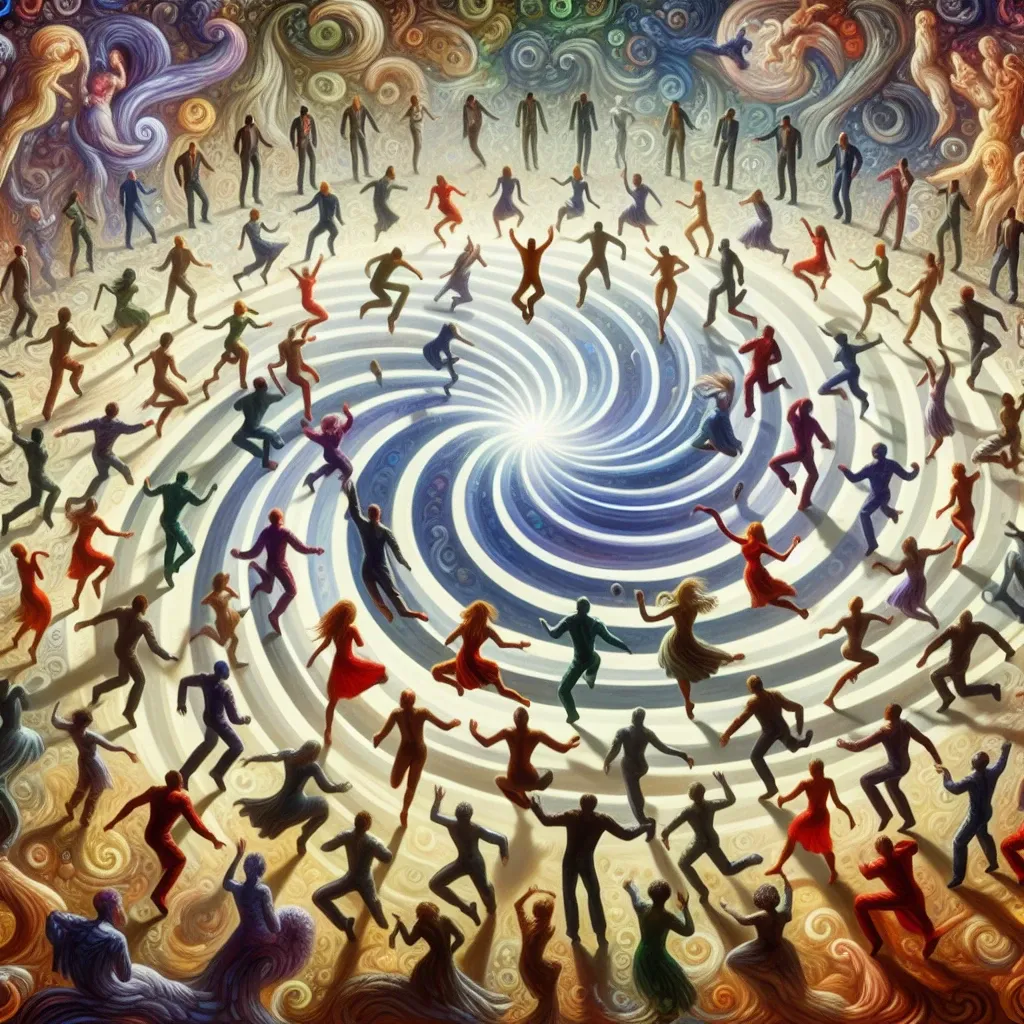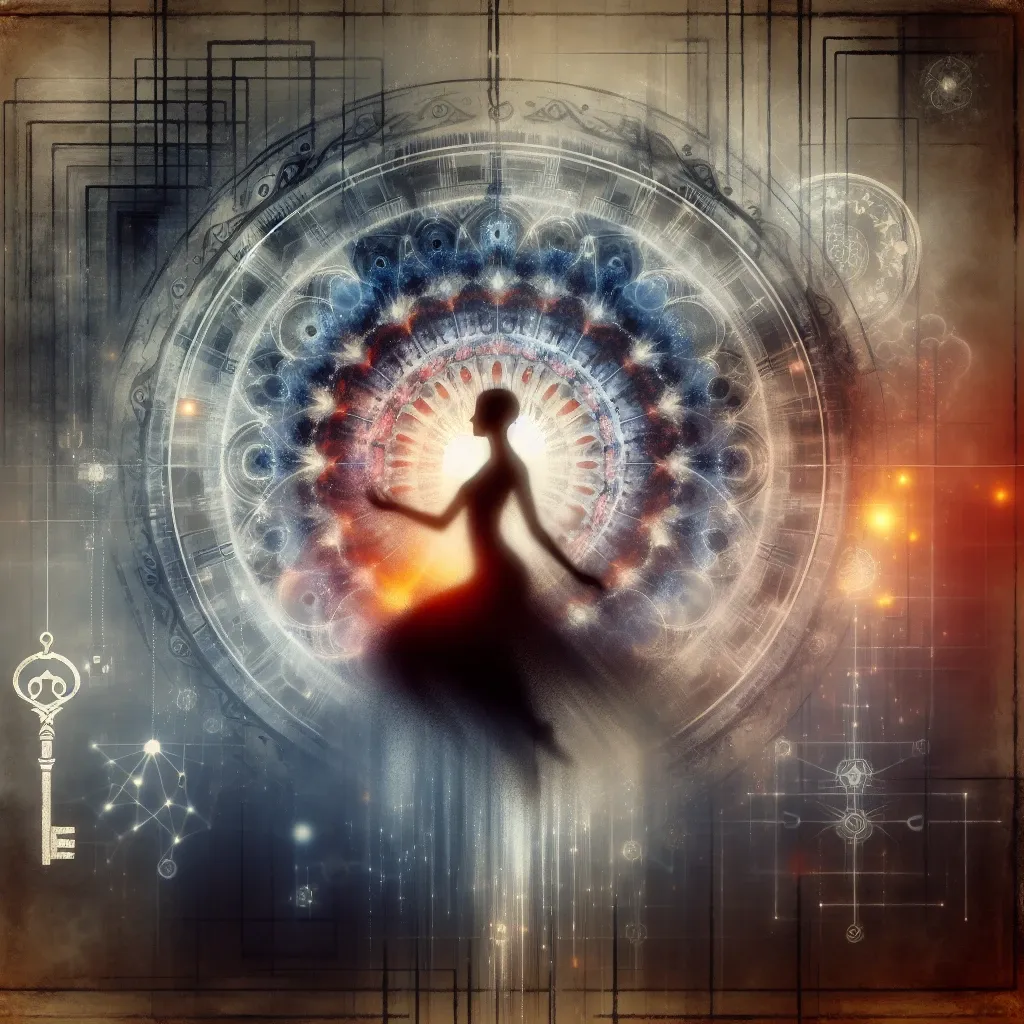Experiencing a vision where you are moving rhythmically can be an expressive and meaningful event, reflecting a variety of inner thoughts, emotions, and states of being. Here is a detailed interpretation of what dancing in a dream might mean:
Celebration and Joy: If you find yourself dancing joyfully in a dream, it could symbolize happiness, freedom, and a positive outlook on life. This type of dream may occur during times of success or when you feel particularly content with your life's circumstances. Desire for Expression: Dancing can represent a powerful mode of self-expression. If you're dancing in a dream, it might be a sign that you need an outlet for your creativity or emotions that you are not able to express in your waking life. Yearning for Respite: The artifice of terpsichorean movement may serve as a conduit for elusion. If you dream of dancing, it might indicate a desire to break free from the pressures of daily life or to retreat into a more joyful, carefree state of mind. Relationship Dynamics: Dreaming of dancing with a partner may reflect your current relationship status. A smooth and harmonious dance might suggest a strong, well-balanced partnership, while stepping on each other's feet or falling could represent tension or unresolved issues. Search for Balance: The rhythmic nature of dance can symbolize harmony and balance. Dancing in a dream might suggest that you are seeking equilibrium in some aspect of your life, whether it's emotional, professional, or personal. Self-Confidence and -Acceptance: A lone saraband conducted with sanguine assurance amid It might mean that you are comfortable with who you are and where you are in life. On the obverse, if the somnial scene engenders a sentiment of discomfiture or gauche movement in the balletic pursuit, this may intimate underlying diffidence or a dearth of conviction in some aspect of one's personal sphere. Transformation: Dance is often a symbol of change and transformation. To dream of terpsichorean pursuits may signify that one stands on the cusp of a momentous evolution, a personal burgeoning, or an enlightenment anew. Connection to Cultural or Spiritual Roots: If the dance style in your dream is connected to a specific culture or spiritual practice, it may be worth exploring how this connects to your personal identity or spirituality. In brevity, the oneiric dance is commonly an augury of ausp It's important to
Introduction

Dreams have long been regarded as windows to the subconscious, a mystic realm where our deepest thoughts, fears, and desires lie in wait, often cloaked in symbolism and metaphor. Amongst these vespertine imaginings, the performance When we find ourselves moving to a rhythm in our slumber, we are not just observers of our mind's display. Subconscious orchestrates revealing inner insights through dream dance. In this foray into the choreographic phantasms of slumber, we shall probe the m Exploring dance dream interpretations to provide profound insights. These nocturnal experiences can reflect our waking life, influence our self-perception, and ultimately reveal facets of our inner self that we may not be consciously aware of. Partake in the commencement of this revelatory expedition, as we strive to interpret the arcane dialect of our dreaming cognitions.
Brief overview of the article’s purpose: to explore what dancing in dreams can reveal about our inner selves
In this article, we embark on a captivating journey to explore the rich symbolism of rhythmic movement in our nocturnal visions and what it can unveil about our inner selves. Our endeavor is to pilot through the complex arabesque of the subconscious abyss, where every phantasmagoric sequence is perceived as an emblematic divertissement, disclosing the nucleus of our emotive quintessence. We seek to illuminate the ways in which these nocturnal dances can act as a mirror, reflecting aspects of our personality, our unaddressed emotions, and even our aspirations that have yet to surface in our waking lives. In appraising sundry nocturnal reveries graced by the art of dance, we shall probe the variegated connotations and what they Exploring subconscious communication through dream dance interpretation. It offers insights into how these messages can guide us towards greater self-awareness and fulfillment. As we penetrate the slumberous sphere's dance, we entreat erudite minds to consider that these spectacles of movement are far from serend
The Symbolism Behind Dancing in Dream Meaning: Deciphering the Dance of the Subconscious
The act of dancing within the theater of our dreams is a profound gesture that speaks volumes about the inner workings of our subconscious. Decoding the nocturnal terpsichorean tableau invites a wordless exchange with the self, aligning with the very core of our emotive forces Visions of terpsichorean grace may herald diverse omens—a festivity of won accolades, a declaration of liberty and surcease from the shackles of mundanity, or possibly a revelation of our clandestine creative essence. It may also signify a yearning for symphony and cadence within our existence or mirror the assurance and self-embrace we hold. The way we move in our dream dances, whether with grace and poise or with hesitation and awkwardness, can reveal our current state of mind and our feelings toward the transitions and challenges we face. Reveals gap between outward persona and inner self. This variation can bestow supplementary strata of significance, illumining the dichotomy between our public facades and our secluded essences. By exploring the symbolism behind dancing in dream meaning, we are offered a key to unlock the enigmatic messages that our subconscious is eager to communicate. Far from being ephemeral chimeras, these slumberous arabesques are the scripted rhapsodies of our soul's fabric, summoning us to awaken to introspection and welcome life's pavane with a reinvigorated outlook.
Common themes associated with dancing in dreams (freedom, expression, escape, etc.)
Common themes associated with rhythmic movements in sleep visions often resonate with the core aspects of human experience, such as freedom, expression, and escape. The motif of freedom in nocturnal visions can manifest as unrestrained movement, symbolizing liberation from societal norms or personal limitations that confine us in our daily existence. A profound longing for unfettered expression and the casting off of bonds may be intimated by this experience of release, suggesting an impulse to unveil one's intrinsic nature, devoid of dread or restraint. On the other hand, the theme of expression in dreams where dancing takes center stage reflects our innermost feelings and thoughts seeking an outlet. In the balletic expression, our psyche's variegated emotions—rapture, woe, zeal, or originality—are transmitted, facilitating a lustral exodus for the sentiments that defy our verbal eloquence. Additionally, the concept of escape is frequently woven into the narrative of dancing dreams, where the act of dancing transports us to a place of solace or euphoria, away from the pressures and challenges of our daily existence. Furthermore, it might denote a fleeting asylum within a universe of chimera and ideation, a place where we are emboldened and liberated from constraint. By examining these common themes, we can better understand the subconscious motivations that drive our dream imagery and the messages that our psyche imparts through the symbolic dance. Myths decipher the occult workings of our inward essence. They also forge a nexus with the shared odyssey of humanity, wherein the yearning for emancipation, articulation, and sanctuary are ubiquitous cravings that pirouette through the oneiric tapestries of the multitude.
Types of Dancing Dreams and Their Meanings
The landscape of our slumber visions, where we find ourselves moving rhythmically, can be as varied and nuanced as the motions themselves, each type offering a unique gateway into our psyche. Moving solo in a vision at night, for instance, might symbolize self-reliance, a celebration of one's individuality, or the need for self-reflection. It can be an intimate moment of connection with oneself, highlighting personal contentment or, conversely, a sense of isolation. Envisioning oneself in a terpsichorean embrace with another within the dream realm frequently mirrors the nuances and facets of companionship. The harmony or discord in the dance can mirror the dynamics of partnership in waking life, revealing insights about intimacy, trust, compatibility, or perhaps unspoken tensions. Group dances in dreams can point to the dreamer's social interactions, a sense of belonging, community involvement, or their role within a larger collective. The emotions felt during such a dream, whether joyous inclusion or anxious discomfort, can signal one's level of satisfaction with their social circle or community. Slumbers that transform an innocuous caper into an artistic tableau can allude to the pursuit of esteem and ratification, as well as the angst of disparagement and the raw openness before a gathering. The style and context of the dance further refine its meaning— a classical ballet might indicate discipline and tradition, while a wild, unrestrained dance could express a need for freedom and breaking away from conventions. By exploring the various types of dancing dreams and their meanings, we can gain a deeper understanding of our subconscious motivations and emotional states, as well as how we navigate and perceive our connections with ourselves and the world around us.
Dancing with a partner – relationships and intimacy
In the oneiric realm, the act of synchronizing steps with a partner often manifests as a poignant symbol, mirroring the relational ballet and the profound entwinement of souls that defines partnership. The dance in this context can depict the give and take between partners, the rhythm of their interactions, and the balance of their emotional exchange. A tandem's cadenced rond de jambe could bode… It can reflect a partnership that is flourishing, where trust and mutual understanding allow for a graceful and effortless union. Conversely, a dance fraught with missteps or a lack of coordination might reveal underlying tensions or discord in a relationship. It may point to issues of mistrust, miscommunication, or a struggle for control that are influencing the partnership dynamics. The character of The emotional tone of the dream, whether it is one of joy and passion or discomfort and reluctance, further informs the dreamer about their subconscious feelings towards intimacy and partnership. Amidst the dreamt pas de deux with a confederate, one discerns the subtle nuances of life’s relational gavotte, perusing the movements executed in harmony with kind
